Current Standings; Arizona
I have access to Maple again, and corrected a typo in my new spreadsheet which had given Bush a high chance of winning Vermont. Were the election held today, Kerry would have roughly a 49.5% chance of winning and an expected 273.1 electoral votes. I predict Kerry to have a 53.5% chance of winning on Election Day, with an expected 272.2 electoral votes.
These facts may seem paradoxical for two reasons: First, Bush would be more likely than Kerry to win if the election were held today, even though Kerry has more than 270 expected electoral votes. Second, Kerry becomes more likely to win between now and election day, while losing almost one expected electoral vote.
The first paradox comes from the probability distribution of Kerry's electoral votes being skewed right (meaning that the right tail is heavier than the left tail). Every state that Bush takes with a probability that's neither too much nor too little probability contributes some significant right skew, and every state that Kerry takes with neither too much nor too little probability contributes some significant left skew. Because Florida, Ohio, and Virginia are large states that would currently go to Bush with probabilities between 72 and 87%, they contribute a substantial right skew to the overall distribution of Kerry's electoral votes.
So why is the likelihood of Kerry winning on Election Day so much better than it would be today? Mostly because Florida and Ohio are states with low sampling error (the error that determines predictions for today) but high passage-of-time error (the error that partially determines predictions for Election Day) compared with the projected margins of Bush's victories there. Even though the two-party vote is extraordinarily close in these states (Bush gets an expected 50.5-50.9% of the two-party vote in these states), I have enough data on those two states to be fairly confident (72% chance for Florida and 87% for Ohio) that they would go to Bush if the election were today. However, the passage of several months adds enough variance to these states' predictions that they become much less certain. If Bush had even 52% or so of the two-party vote in these states, the extra variance wouldn't matter nearly as much, as is the case in Kerry's Michigan and Pennsylvania.
I am not sure what causes Kerry to lose an expected electoral vote between now and Election Day. It is possible that the passage-of-time error affects Extremely Likely Kerry states such as Minnesota or Maine slightly more than Extremely Likely Bush states such as Alaska or Texas because of Bush's ridiculously large projected margins of victory in many western states.
Cartogram showing, for each electoral vote, the chances that the leading candidate would win if the election were today:
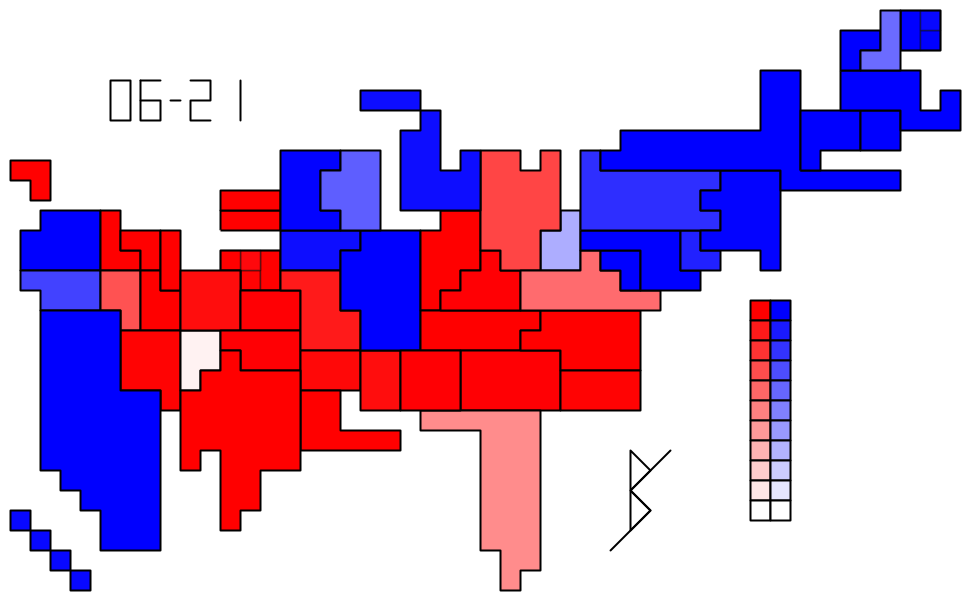
Cartogram showing, for each electoral vote, the chances that the leading candidate will win:
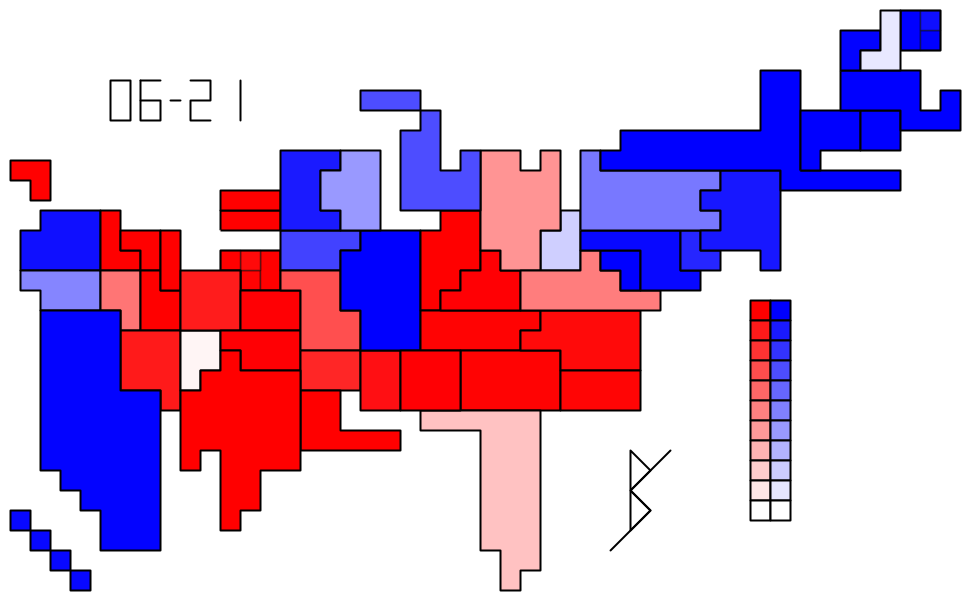
Cartogram showing, for each electoral vote, the expected percentage (of Bush/Kerry votes only) for the leading candidate.
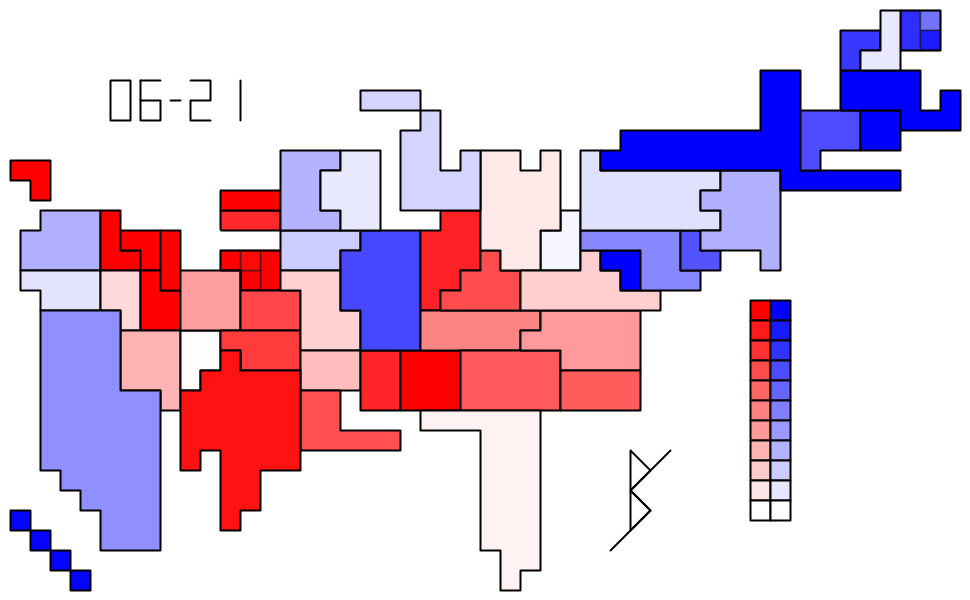
Arizona changed from Very Safe Bush to Extremely Safe Bush because of a new Market Solutions Group poll.
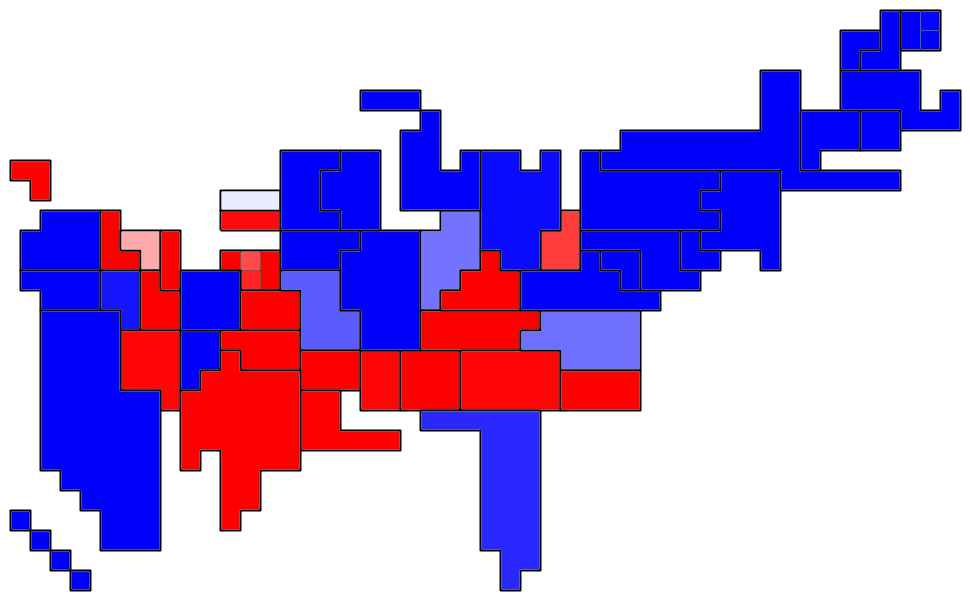
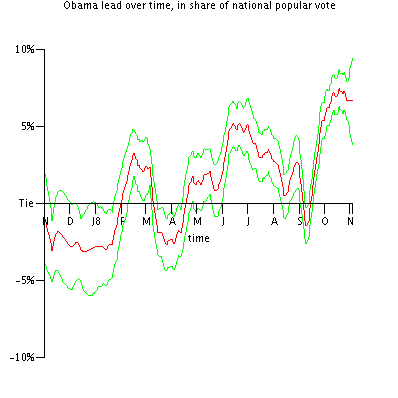

0 Comments:
Post a Comment
<< Home